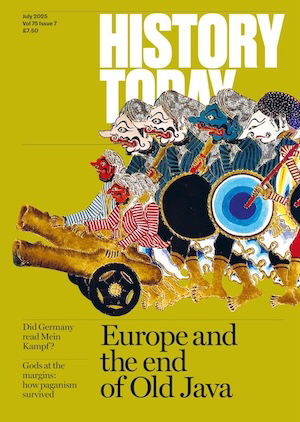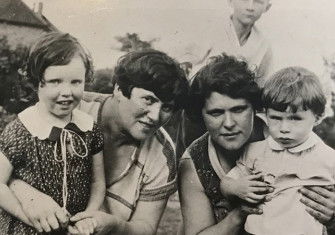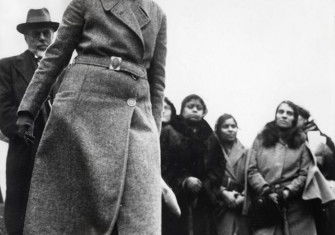From Russia (to Ireland) with Love
In 1805, a lady’s maid from Cork visited the palace of a Russian princess and inadvertently became one of the first published Irish writers on Russia.
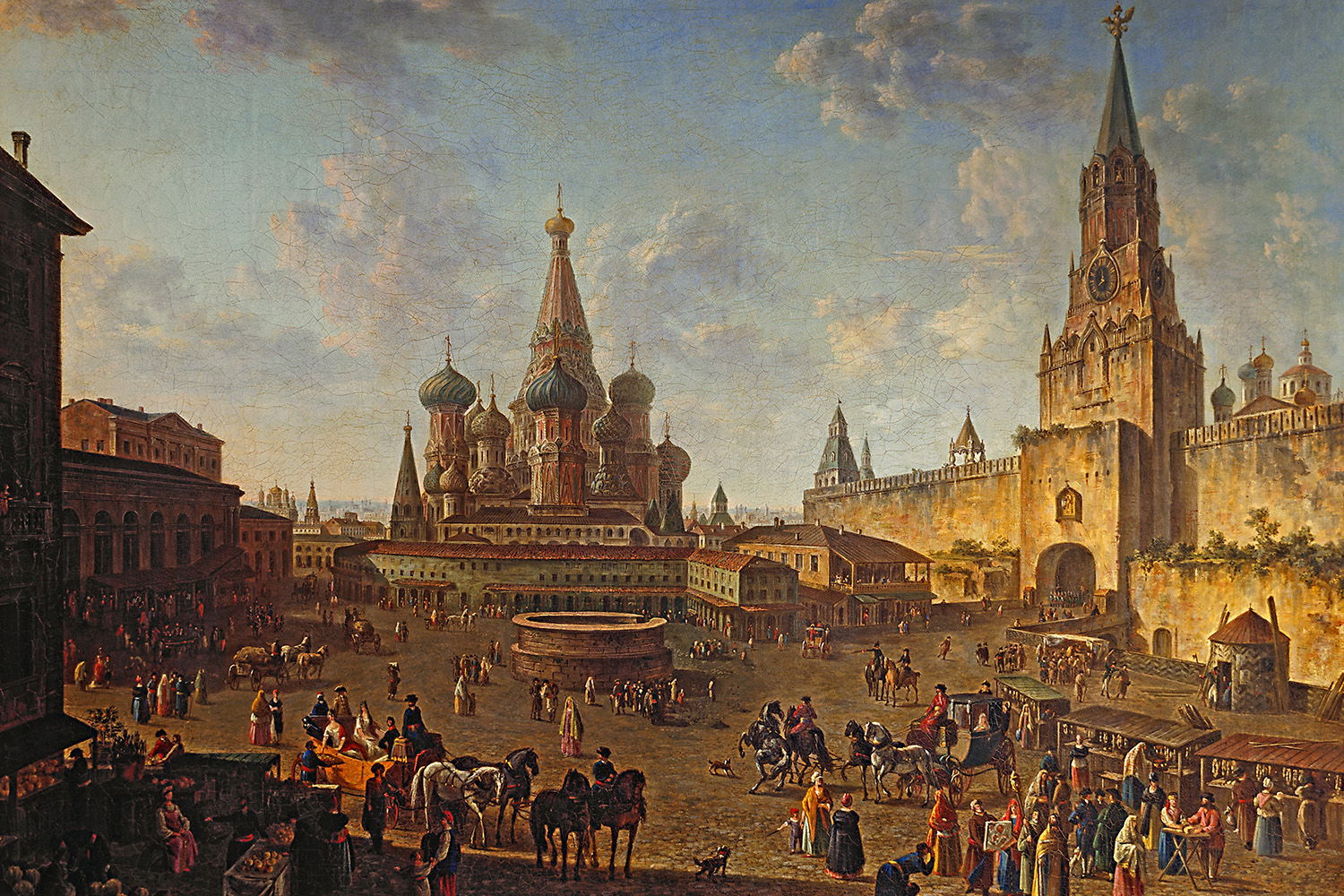
Red Square, Moscow by Fyodor Alekseyev, 1801.
In June 1813, London’s Universal Magazine of Knowledge and Pleasure published two letters from Russia. They were written by Eleanor Cavanagh, a lady’s maid who had travelled there between 1805 and 1807. Prefaced by a brief, but cutting, introduction that marvelled at how the letters revealed the effects of travel on the mind of ‘an uneducated Irish girl’, they were among the first published Irish accounts of Russia.
Irish people had worked, lived in and travelled to Russia from at least the early 17th century. Originally, they were mostly military men and their families, but throughout the 18th and 19th centuries the profile of traveller diversified to include doctors and engineers, Irish-born diplomats representing British interests, travel writers, journalists, nurses (particularly during the Crimean War and First World War), governesses, tutors and nannies and political radicals. Their numbers were miniscule in comparison to the Irish presence in Britain or America. While many of them wrote detailed records of their experiences, the first book-length eyewitness account of Russia by an Irish author, Richard Southwell Bourke’s St Petersburg and Moscow: Visit to the Court of the Czar was published in 1846, followed by Selina Bunbury’s Russia after the War in 1857. History of Poland (1698), by the Irish physician and historian Bernard Connor, included some information on neighbouring Muscovy, but this had been supplied by his friend, the English writer John Savage. The Irish journalist Robert Bell published his three-volume History of Russia in 1836-38, but does not seem to have visited the country – his book was compiled from evidence gathered by others. Diplomats did, of course, produce official accounts, but these were intended only for a limited readership. Several 18th- and 19th-century Irish visitors to Russia kept detailed accounts of their experiences, most of which were either never published, or were only published long after the author’s death. Eleanor Cavanagh’s letters are therefore unusual for having been made available to a wide readership within just a few years of writing.
What little is known of Eleanor Cavanagh’s life is gleaned from her Russian letters. She was from Cork, had four brothers and was lady’s maid to the traveller and diarist Katherine Wilmot (1773-1824). Eleanor’s mother and father were both still living in 1805, but her own age at the time of travel is not known.
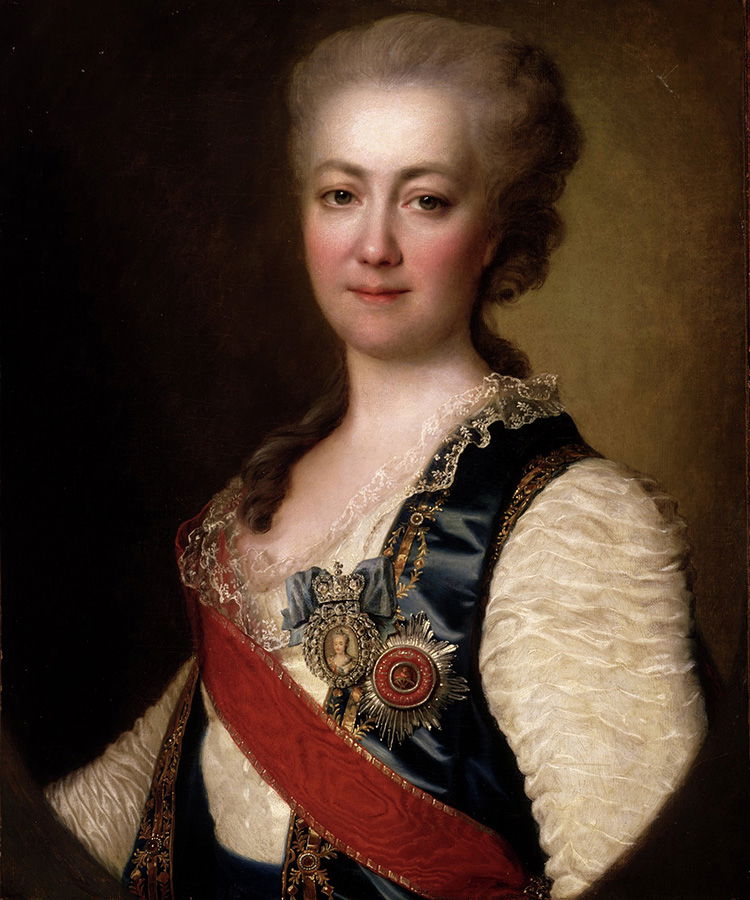
Her employer, Katherine Wilmot, was born in Ireland to an English father and Irish mother. In 1801 Wilmot made a grand tour of France and Italy with her friend and neighbour Margaret King, Lady Mount Cashell, who had been tutored in childhood by Mary Wollstonecraft and who created a stir when she left her aristocratic husband for her lover, William Tighe. Katherine Wilmot travelled to Russia in 1805 to see her sister, Martha, who had gone there in 1803 to visit Princess Ekaterina Romanovna Dashkova, a prominent figure in Enlightenment Europe. In her youth, Dashkova was a close friend and confidante of Catherine the Great, and played a part in the 1762 coup that saw Catherine seize power from her husband, Peter III. During their combined eight years in Russia, the Wilmot sisters wrote thousands of pages of observations on traditional customs, high society and Dashkova’s personal and family life. The sisters’ letters and diaries remain one of the most important English-language sources for early 19th-century Russia. Martha published several of Katherine’s letters as appendices to her 1840 edition of Dashkova’s memoirs and editions of both sisters’ diaries and letters were posthumously published in the 1920s and 1930s.
Eleanor and Katherine left Cork for Russia in June 1805, arriving in Moscow in August; they remained there until July 1807. Eleanor’s early impressions of Russia are recorded in two letters dated August and October 1805. The first is addressed to Henrietta Chetwood, one of the younger daughters of a Cork family connected to the Wilmots; the second letter is addressed to her father. She wrote at least one other letter – we know this because she enquired as to its arrival – but it never reached its intended recipient. It can be assumed that she also wrote other letters that have not survived. Totalling around 5,500 words, her two extant letters are a rich, impressionistic source and record her unfiltered reactions to the things she saw and experienced during her first months in a new place.
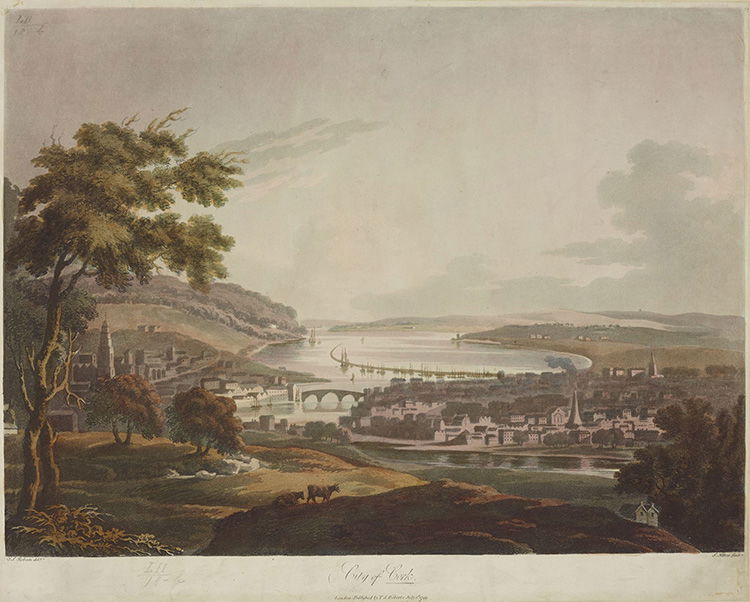
Eleanor enjoyed the relatively smooth sailing from London to Kronstadt, near St Petersburg, with only two stormy days, and passed the time aboard ship by making a gown. On arrival in Moscow, her first impression of Princess Dashkova was very congenial. She told her father: ‘I never seen so good a lady since I was born, nor so kind and generous a lady.’ She admired Dashkova greatly and was warmly inclined towards her, having heard much about her before meeting her. Coupled with her limited education, this may have contributed to Eleanor’s lack of understanding of the legal status of Russian serfs. She wrote of Dashkova’s estate, ‘There are 16 villages all belonging to the Princess … 3,000 men and women, all their subjects, and loving her as if she was their mother.’ Serfs, however, were not tied to the landowner but to the land itself and were denied basic freedoms. They could not marry without the landowner’s permission, own property or vote. Eleanor had little sympathy for them, telling Henrietta Chetwood that ‘they call them slaves, but never a bit of a chain do I see hanging about them any way’.
Eleanor’s impressions of Russian life and customs were fairly negative. Expressing her disapproval of the brightly coloured traditional women’s dresses and the quantities of jewellery that they wore, she wrote to Chetwood, ‘Why wouldn’t they content themselves to dress like Christians?’ Religious differences were at the heart of the difficulty she had in relating to the manservants in particular, criticising their beards, ponytails, dress and manners. She unashamedly told Chetwood how, when an African servant brought her dinner to her room, she mocked him for calling bread by the Russian khleb. An Irish Catholic maid in service to a Protestant woman of English parentage, Eleanor’s position in Ireland was one of clear inferiority in terms of religion, ethnicity, class and gender. However, in Russia, she found herself in an elevated – or less disadvantageous – position, thanks to her status as the Anglophone maid of an esteemed visitor. She harnessed her Catholicism and her personal qualities of modesty and restraint to place herself in relative terms above Dashkova’s Russian Orthodox, African and Adyge (Circassian) serfs and servants.
The ethno-religious hierarchies that governed Eleanor’s interactions and relationships with the other servants in Dashkova’s palace were, however, turned upon Eleanor herself after her return from Russia. The publication of her letters in 1813 seems to have been the result of a cruel joke by wealthy women, the kind upon whom women like Eleanor depended for a livelihood.
In early 1812, Martha Wilmot met Sarah ‘Serena’ Holroyd in Bath. The town was, at the time, a popular resort for those with disposable incomes and an important site of female sociability. Martha showed Eleanor’s Russian letters to Serena in good faith and on the condition that they not be shared with anyone else. However, Serena wrote to tell her niece, the writer Lady Maria Stanley, about the letters shortly afterwards. Sixteen months later, the letters were published in the Universal Magazine under the initials, ‘M.S.’. It seems that Maria Stanley secured a copy of the letters, probably from Serena, and submitted them to the magazine. The introduction to the letters invoked qualities considered biologically predetermined in the uneducated Irish character – ‘shrewd simplicity’ and ‘unsophisticated feelings’. The combination of Eleanor’s ethnicity, class, gender and profession left her vulnerable to public mockery, not least for her dialect and expression. Indeed, this episode prefaces the widespread caricaturing of the figure of the ‘Irish Bridget’ domestic servant in the later 19th-century American press.
Eleanor’s letters present a proud woman careful to emphasise her good conduct and her determination that her travels would not result in any accusation that she had developed ideas above her station. She asked Henrietta Chetwood to tell her parents and neighbours that she regularly attended confession, took a cold bath every morning, and that ‘I never make free with nobody, nor won’t'. This assertive, confident exterior slipped when it came to family. She confided in her father: ‘I do be dreaming of my brothers all the night; so if they be sick, dear father, let me know.’ There is a poignant mixture of excitement at new experiences and keen awareness of her distance from home, when she tells her father:
I’d be sorry to go back so soon as now, for to be sure this is a wonderful grand place, and I am always very merry, tho’ I’m often thinking of every body in Ireland when I would be sitting at my work.
It is hard not to wonder whether she learned of the public betrayal of her confidence and whether it damaged her self-assurance and pride – and soiled her memories of her time in Russia.
Angela Byrne is Research Associate at Ulster University and is completing a book on Irish encounters with Russia in the 18th and 19th centuries.

